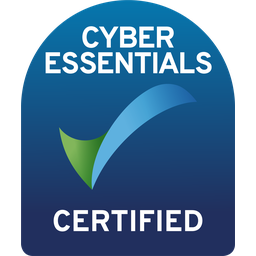Infant to Junior (KS1 – KS2) Transition Portal
Having experienced the seamless transfer of student data using our Primary to Secondary Transition Portal, we were approached by junior schools who also wanted to benefit from receiving data during the transition from infant to junior school. The Infant to Junior Transition Portal provides the opportunity for schools, leaders and Local Education Authorities to standardise their transition process between year two and year three and ensure that pupil information is communicated effectively between infant and junior schools.
How does the Infant to Junior Transition Portal work?
 Our Infant to Junior Transition Portal has been developed with a flexible approach to allow adoption by individual schools, multi-academy trusts, through to Local Education Authorities. Infant schools take the lead, uploading their year two cohort, then through a series of regular uploads, the destination junior school can securely request pupil data and begin the transition process.
Our Infant to Junior Transition Portal has been developed with a flexible approach to allow adoption by individual schools, multi-academy trusts, through to Local Education Authorities. Infant schools take the lead, uploading their year two cohort, then through a series of regular uploads, the destination junior school can securely request pupil data and begin the transition process.
Infant schools are able to complete key information about their pupils, ensuring that junior schools have a fully comprehensive data set focusing on the pupils due to transition to them. The Transition Portal also allows for the early flagging of vulnerable students and allows infant schools to securely share student files. Junior schools are able to track which pupil profiles are complete, communicate with feeder primary schools and print reports ready to welcome pupils in the next school year.
Our GDPR compliant portals place an emphasis on data security, with the Infant to Junior Transition Portal providing a secure means to transfer pupil data between schools. School Transition provide a full support package, from project management, stakeholder engagement and user training, through to encouraging form completions for every pupil, further reducing school’s workloads. The Infant to Junior Transition Portal focuses not on children as data, but instead gives a picture of the whole child and opens up conversations between schools. This ensures that every child is well known when they begin year two.
Here at School Transition we also are able to undertake the development of bespoke School Transition Portals. Our design and development team are experienced in listening to the needs of schools and creating systems that revolve around pupil needs. We understand that there may be a need for further Transition Portals that are developed especially for children transitioning to Special Schools, Pupil Referral Units or other destinations.
Our original Transitional Portal began with the idea of just one school leader and has helped thousands of pupils transition between schools. We welcome all ideas and suggestions and will consider bespoke development as your idea may also help numerous children and schools.
Year 11 to Post 16 (KS4 – KS5) Transition Portal
Following the success of our Primary to Secondary Transition Portal, School Transition were approached to develop a Year 11 to Post 16 Portal. Our consultation with education professionals told us that as with primary to secondary transition, there was no standardised approach to sending transition data from secondary schools to post-16 institutions. Prior to the implementation of the Transition Portal, post-16 institutions would often need to wait weeks to find out more information about their newly enrolled students. Using the Secondary to Post-16 Transition Portal means that information is transferred securely, without delay, upon confirmation of enrolment to enhance transition for all students and ensure accurate tracking of those who may be Not in Education, Employment, or Training (NEET).
How does the KS4 to KS5 Transition Portal work?
 For this portal, secondary schools take the lead and create their student records, with key information to be shared. including visual flags for concern. The data captured by the Transition Portal is comprehensive and allows for collaboration between secondary staff to ensure a holistic view of each young person. The portal allows secondary schools to securely share student files and key competencies in English and Maths. Upon enrolment, post-16 institutions can request student information from the Transition Portal. The user-friendly dashboard clearly flags which students may need additional support, whilst providing the ability to create reports on student data to enhance the support offered during transition.
For this portal, secondary schools take the lead and create their student records, with key information to be shared. including visual flags for concern. The data captured by the Transition Portal is comprehensive and allows for collaboration between secondary staff to ensure a holistic view of each young person. The portal allows secondary schools to securely share student files and key competencies in English and Maths. Upon enrolment, post-16 institutions can request student information from the Transition Portal. The user-friendly dashboard clearly flags which students may need additional support, whilst providing the ability to create reports on student data to enhance the support offered during transition.
Our GDPR compliant portals place an emphasis on data security, with the Secondary to Post-16 Transition Portal providing a secure means to transfer pupil data between schools and post-16 destinations. School Transition provide a full support package, from project management, stakeholder engagement and user training, through to encouraging form completions for every student. School Transition focus not on students as data, but instead on giving a full picture of the learner and opening up conversations between institutions.
The portal also provides reporting on which students have not enrolled in further education, allowing for tracking which young adults are NEET, prompting earlier interventions by support organisations.
Primary to Secondary (KS2 – KS3) Transition Portal
Our consultation with education professionals told us that there was no standardised approach to primary to secondary school transition, with no one system to transfer transition data and open up conversations between primary schools and secondary schools. The Primary to Secondary Transition Portal provides the opportunity for schools, leaders and Local Education Authorities to standardise their transition process and ensure that pupil information is communicated effectively between primary and secondary schools. Feedback from users has told us that using the Transition Portal has transformed transition and streamlined the transition process.
How does the Primary to Secondary Transition Portal work?
 Our Primary to Secondary Transition Portal has been developed with a flexible approach, to allow adoption by individual schools, multi-academy trusts, through to Local Education Authorities. Primary schools begin the portal process, uploading their year six pupils from as early as January. Following National Offer Day in March, through a series of regular uploads, the destination secondary school or Local Authority assign students to their secondary school. If a pupil’s secondary place allocation changes, pupil records are then reassigned to their new destination.
Our Primary to Secondary Transition Portal has been developed with a flexible approach, to allow adoption by individual schools, multi-academy trusts, through to Local Education Authorities. Primary schools begin the portal process, uploading their year six pupils from as early as January. Following National Offer Day in March, through a series of regular uploads, the destination secondary school or Local Authority assign students to their secondary school. If a pupil’s secondary place allocation changes, pupil records are then reassigned to their new destination.
Primary schools are able to complete key information about their pupils, ensuring that secondary schools have a fully comprehensive data set focusing on the pupils due to transition to them. The Transition Portal also allows for the early flagging of vulnerable students and allows primary schools to securely share student files. Secondary schools are able to track which pupil profiles are complete, communicate with feeder primary schools and print reports ready to welcome pupils in the next school year.
Our GDPR compliant portals place an emphasis on data security, with the Primary to Secondary Transition Portal providing a secure means to transfer pupil data between schools. School Transition provide a full support package, from project management, stakeholder engagement and user training, through to encouraging form completions for every pupil, further reducing school’s workloads. School Transition choose not to focus on children as data, but instead on giving a picture of the whole child and opening up conversations between schools. This ensures that every child is well known when they begin year seven.
 Our Infant to Junior Transition Portal has been developed with a flexible approach to allow adoption by individual schools, multi-academy trusts, through to Local Education Authorities. Infant schools take the lead, uploading their year two cohort, then through a series of regular uploads, the destination junior school can securely request pupil data and begin the transition process.
Our Infant to Junior Transition Portal has been developed with a flexible approach to allow adoption by individual schools, multi-academy trusts, through to Local Education Authorities. Infant schools take the lead, uploading their year two cohort, then through a series of regular uploads, the destination junior school can securely request pupil data and begin the transition process. For this portal, secondary schools take the lead and create their student records, with key information to be shared. including visual flags for concern. The data captured by the Transition Portal is comprehensive and allows for collaboration between secondary staff to ensure a holistic view of each young person. The portal allows secondary schools to securely share student files and key competencies in English and Maths. Upon enrolment, post-16 institutions can request student information from the Transition Portal. The user-friendly dashboard clearly flags which students may need additional support, whilst providing the ability to create reports on student data to enhance the support offered during transition.
For this portal, secondary schools take the lead and create their student records, with key information to be shared. including visual flags for concern. The data captured by the Transition Portal is comprehensive and allows for collaboration between secondary staff to ensure a holistic view of each young person. The portal allows secondary schools to securely share student files and key competencies in English and Maths. Upon enrolment, post-16 institutions can request student information from the Transition Portal. The user-friendly dashboard clearly flags which students may need additional support, whilst providing the ability to create reports on student data to enhance the support offered during transition. Our Primary to Secondary Transition Portal has been developed with a flexible approach, to allow adoption by individual schools, multi-academy trusts, through to Local Education Authorities. Primary schools begin the portal process, uploading their year six pupils from as early as January. Following National Offer Day in March, through a series of regular uploads, the destination secondary school or
Our Primary to Secondary Transition Portal has been developed with a flexible approach, to allow adoption by individual schools, multi-academy trusts, through to Local Education Authorities. Primary schools begin the portal process, uploading their year six pupils from as early as January. Following National Offer Day in March, through a series of regular uploads, the destination secondary school or 